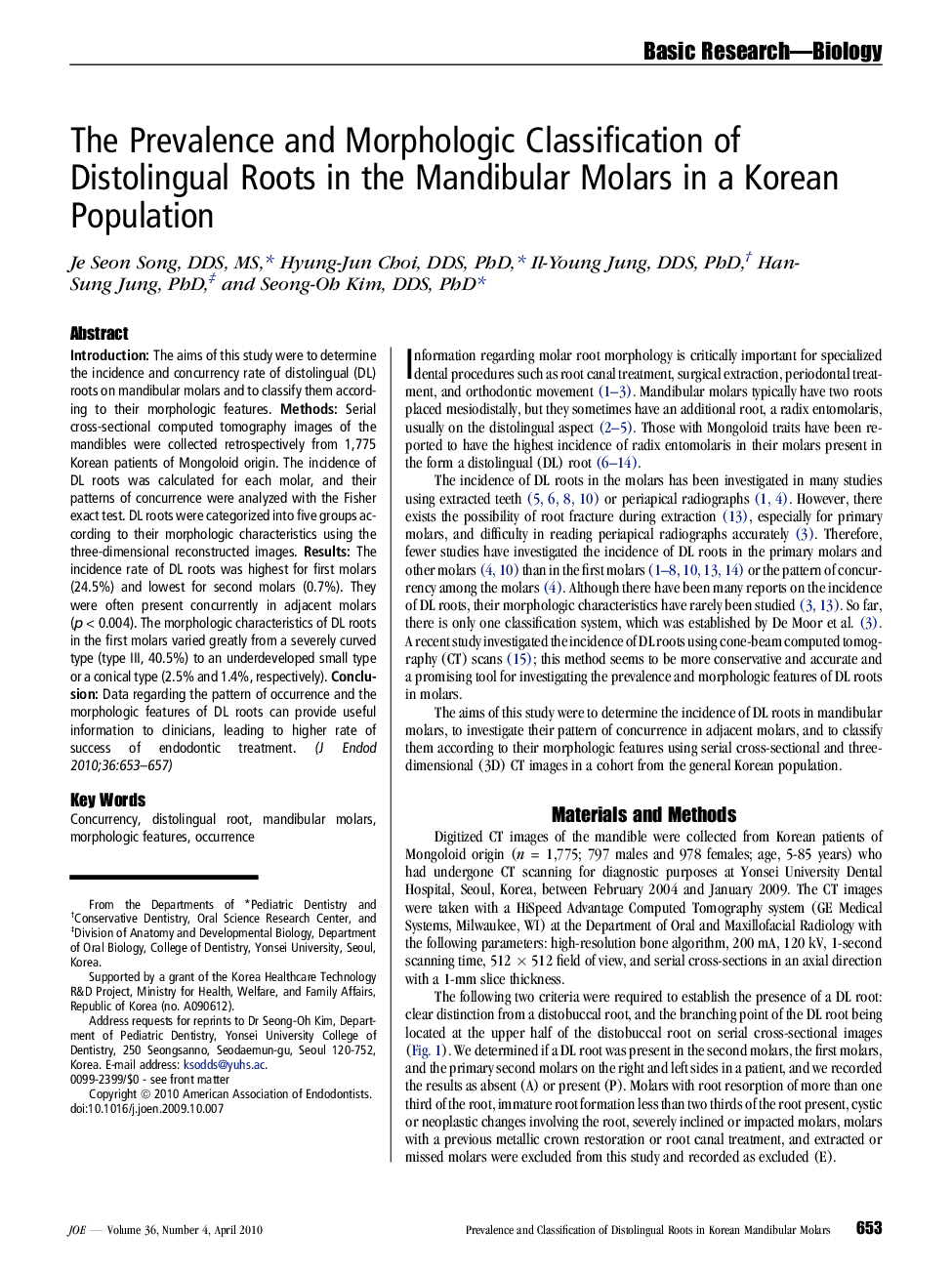| Article ID | Journal | Published Year | Pages | File Type |
|---|---|---|---|---|
| 3147967 | Journal of Endodontics | 2010 | 5 Pages |
IntroductionThe aims of this study were to determine the incidence and concurrency rate of distolingual (DL) roots on mandibular molars and to classify them according to their morphologic features.MethodsSerial cross-sectional computed tomography images of the mandibles were collected retrospectively from 1,775 Korean patients of Mongoloid origin. The incidence of DL roots was calculated for each molar, and their patterns of concurrence were analyzed with the Fisher exact test. DL roots were categorized into five groups according to their morphologic characteristics using the three-dimensional reconstructed images.ResultsThe incidence rate of DL roots was highest for first molars (24.5%) and lowest for second molars (0.7%). They were often present concurrently in adjacent molars (p < 0.004). The morphologic characteristics of DL roots in the first molars varied greatly from a severely curved type (type III, 40.5%) to an underdeveloped small type or a conical type (2.5% and 1.4%, respectively).ConclusionData regarding the pattern of occurrence and the morphologic features of DL roots can provide useful information to clinicians, leading to higher rate of success of endodontic treatment.
